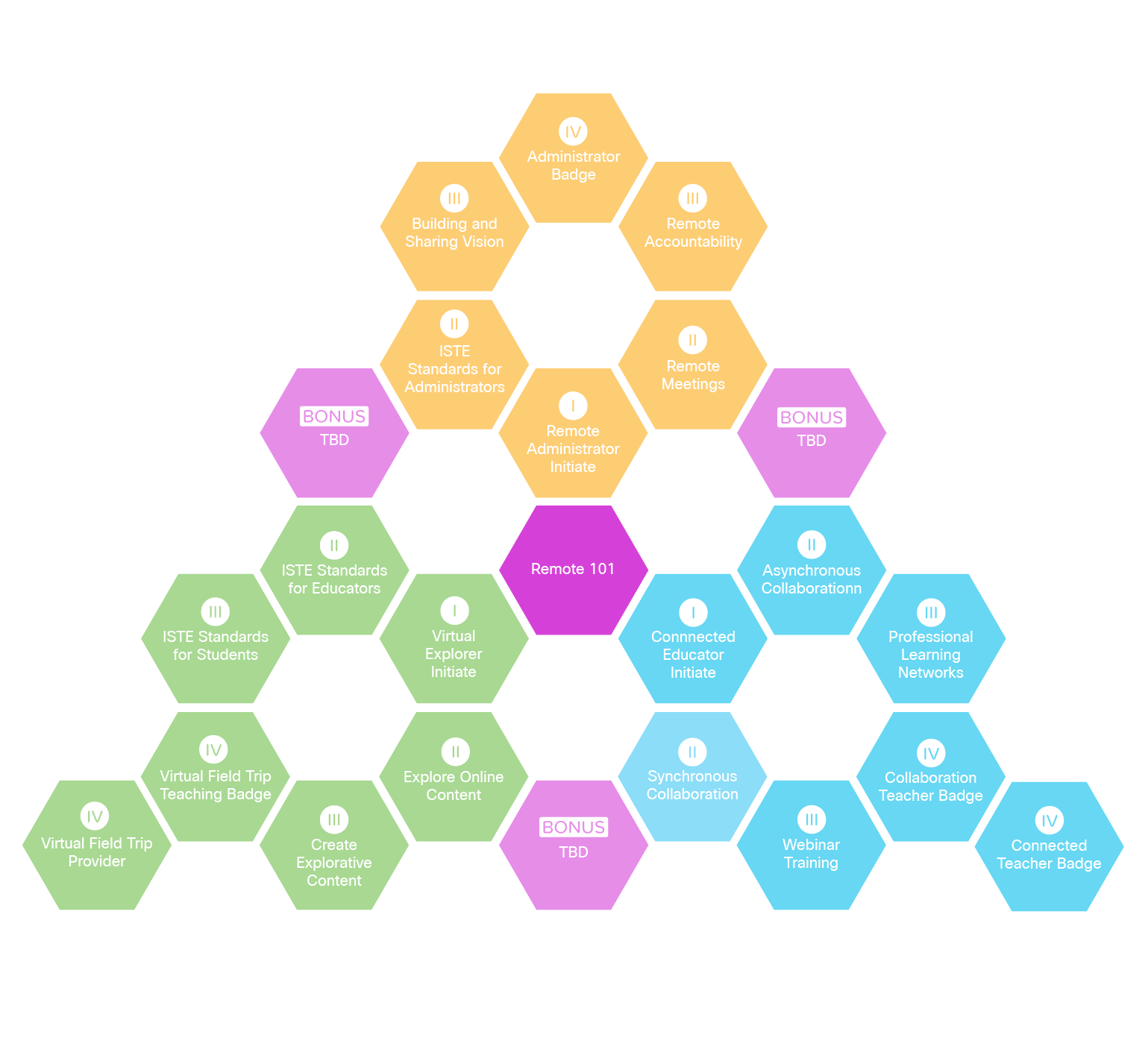Can Virtual Professional Learning be fun? We think so.

The Challenge
The COVID-19 virus has permanently altered education in many ways, exponentially faster than any other circumstance could have. Within a matter of days, educators had to transition their curriculum and instruction methods to an online learning model, often without sufficient (if any) training on how to do so.
To better equip educators for the future of digital learning, traditional in-person Most of us are disenchanted by video calls, and aligning everyone's schedules for hours at a time to host professional learning is a logistical nightmare. Not to mention, maintaining engagement and maximizing content retention are additional challenges in this setup.
While different studies vary in their findings of the average human attention span (one common claim is 8 seconds - which is indeed shorter than that of a goldfish), we do know that it is short, it is getting shorter, and it is especially challenged when we are at home and in front of our technology.
So, how can we overcome the challenges of digital education and train educators to conduct effective virtual learning?
Our Solution
After working with multiple innovative organizations to develop and refine our virtual professional learning model, we concluded that:
Effective virtual professional learning is best implemented through three components: Asynchronous, Mastery-Based, Gamification
At iSchool Initiative, we have combined these elements through a learning tree framework to create engaging and memorable virtual learning.
How Our Virtual Professional Learning Works

Why is Asynchronous, Mastery-Based, Gamification important to successful virtual learning?
Asynchronous: Asynchronous activities allow different individuals to access and engage in information at different times, instead of 'syncing' everyone's schedules to review content simultaneously. Avoiding scheduling conflicts saves everyone time and allows individuals to allocate the time that works best for them to fully focus. The best time to engage in professional learning may be at 5am for one person, but 11pm for someone else, but finding one time which works for everyone will rarely work *well* for everyone to avoid distractions - especially with kids and other responsibilities vying for attention while educators are working from home.
Mastery-Based: Scrolling through information without application produces minimal engagement and even less retention. By pairing information with activities that allow information to be applied, the information becomes more immediately useful, increasing engagement accordingly.
Gamification: Following a linear set of instructions is neither exciting nor engaging (although it can be frustrating, especially if assembling Swedish furniture). When given a perceived sense of choice, however, with different paths to take in order to master the topics that seem most interesting to you, information becomes a journey of discovery. With varying levels, or ranks, of information to unlock, there is incentive to continue learning in order to "unlock" new knowledge, and see how it connects to other areas of expertise.
While we hope to return to in-person training as soon as it is safe to do so, virtual training solutions are a key component to the current educational landscape, and implementing the elements of asynchronous, mastery-based, gamification will help make your next training as impactful as possible.
To work with our team to design engaging professional learning experiences, schedule a call below:

